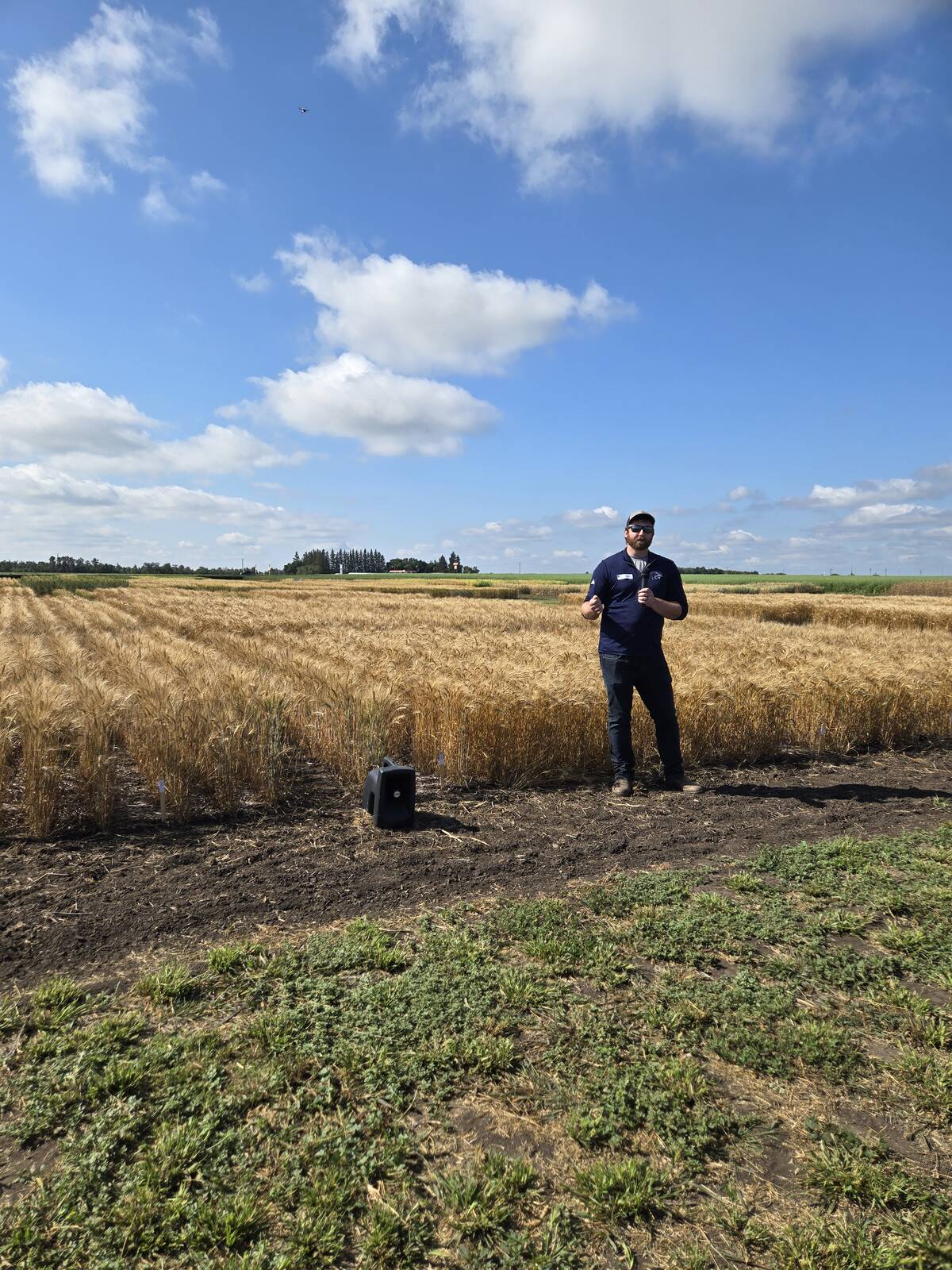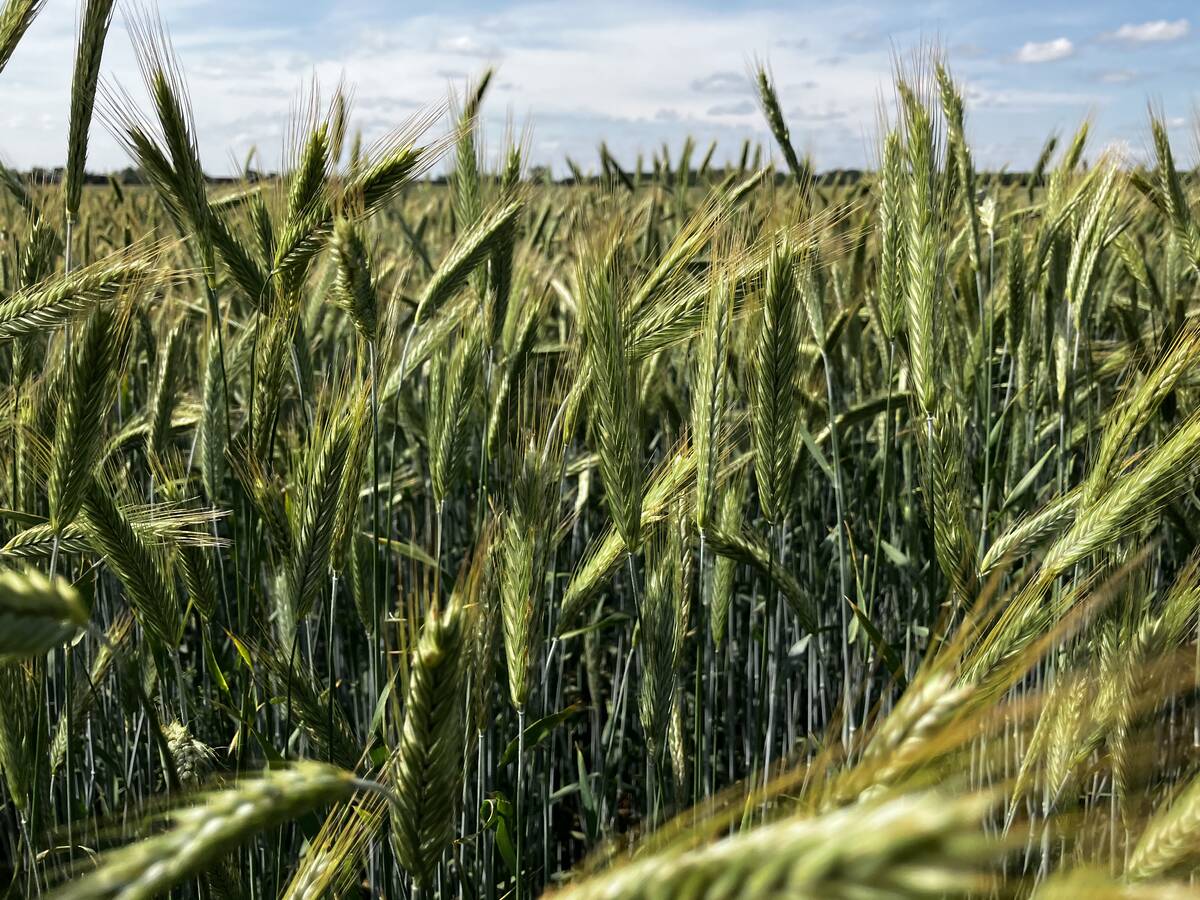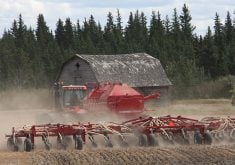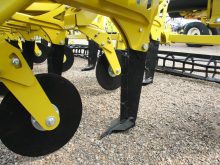Glacier FarmMedia – The news for Manitoba’s winter cereals in 2025 has had high points and low points.
On the pro side, winter cereals saw good uptake. Plantings in the autumn of 2024 crept up to a record 174,000 acres for fall rye in Manitoba, said Alex Griffiths, conservation programs specialist for forages at Ducks Unlimited Canada, which includes the organization’s winter cereal program.
Winter wheat, however, saw less popularity. Just fewer than 40,000 acres of winter wheat were seeded, said Griffiths, the least planted area since the 32,000 acres seeded in 2020. This was a far cry from the 600,000 acres seeded in 2013 and the record 620,000 in 2008, according to Statistics Canada.
Read Also

Stacking Canada up on gene editing livestock
Canada may want to gauge how Argentina and other countries have approached gene editing in livestock and what that has meant for local innovation.
Winter wheat is still struggling to recover from a slide in popularity in Manitoba, although fall rye has dug a deeper foothold among the province’s farmers.
Winter survival was also good, and that strong start put the crop ahead of some later worries on water availability.
Griffiths put winter wheat survival, for example, at 87-88 per cent, well above the five-year average of 79-80 per cent.
“Most of the fields that I scout are in southwestern Manitoba, kind of around Melita to Baldur up to Roblin. And for the most part, I saw very localized winter kill this year,” Griffiths said during a Manitoba Agriculture crop talk webinar Aug. 27.
The few problem areas occurred primarily in southern Manitoba near the United States border. Griffiths blamed that on a warm spell that happened in late February, which melted the insulating snow layer before it got cold again, leaving the crowns vulnerable.

Water a limiting factor
The downside came with the lack of rainfall experienced over wide regions of the province this growing season.
Manitoba saw rains in later August — including some torrential rains in central Manitoba that dropped more than 90 millimetres within a 24-hour period — but they were late for any benefit to winter cereals.
They also didn’t totally make up the gap. Most of the province was still shy of normal rain totals as of Aug. 24. Manitoba Agriculture reported the Interlake and eastern Parkland, in particular, still overwhelmingly sat below 60 per cent of normal seasonal moisture.
“This year, I’d say water was definitely the most limiting resource, and a couple more timely rains would have really helped out many crops,” Griffiths said.
Yields reflected this variability, with reports ranging from 60 bushels an acre to as high as over 100 bu. per ac. However, many of the fields that had good rains are anywhere from 85 bu. per ac. to the mid-90s, Griffith said.
The August rains also delayed harvest.
“There’s actually still a fair bit of winter cereal and harvest that is not complete yet, as I’ve seen quite a few both winter wheat and fall rye fields still standing,” Griffiths said.
Variety preferences shift dramatically
Manitoba farmers have also changed the type of winter cereals they’re growing.
Data from the Manitoba Seed Growers’ Association variety market share reports show dramatic shift between 2021 and 2024, Griffiths said.
“Back in 2021 the varieties Emerson, (AAC) Gateway and (AAC) Elevate made up 85 per cent of Manitoba’s total winter wheat acreage. Those varieties were all released in the early 2010s and just three years later have dropped to now make up only about 20 per cent of Manitoba acreage.”
Now, varieties such as AAC Gold Rush, AAC Vortex and AAC Wildfire have increased in popularity, now totalling more than half of the winter wheat acreage across the province, he added.
Winter hardiness should be the primary consideration for variety selection, Griffiths believes.
“Personally, I think that is the most important variety trait that you can have, as every other characteristic doesn’t matter if the crop doesn’t survive the winter,” he said.
New varieties like AAC Cold Front and AAC Overdrive are also expected to gain market share as seed supplies improve. AAC Cold Front, for example, has gained attention for its yield, with a 93 bu. per ac. average in recent trials, and is marketed with a consistent 100 bu./ac. potential, Griffiths said. It also comes with very good winter hardiness, average protein and rust resistance, he added.
AAC Wildfire remains a standby though. It has an 89 bu. per ac. yield average and a very good winter hardiness rating, Griffiths said. However, it has some limitations, including susceptibility to stem rust and lodging.
Data from the latest Manitoba Agricultural Services Corporation’s seeded acreage report showed that 39.5 per cent of Manitoba’s insured winter wheat acres in 2025 were AAC Wildfire, the most popular variety, followed by AAC Vortex at 22.5 per cent.
2026 crop inbound
Griffiths expects a modest increase of winter wheat acres coming this fall and a decrease in rye acres.
“The prices aren’t crazy exciting, and there will likely be some carry over with all that production,” he said.

Manitoba has now entered peak seeding window for the 2026 crop.
“The ideal seeding window is around the last week of August until about Sept. 15,” Griffiths said, adding that coverage throughout MASC starts on Aug. 15 and runs for six weeks until Sept. 25 for full coverage, and Sept. 30 for reduced coverage.
Grasshopper pressure remains a concern in some areas, Griffiths said. He recommends doubling the seeding rate of the outside round for fields in high-pressure areas, allowing early seeding while protecting from insect damage.
Fall stands planted on canola stubble and with lots of volunteer canola typically have that weed issue resolve naturally, he added.
“Canola cannot handle cold temperature as well at all, as anybody who’s had to reseed after a May (long weekend) frost in the spring knows. So I don’t see much reason to go out there and spray for these as the plants are just going to die off on their own at the first hard frost.”















